
PHẬT GIÁO DẤN THÂN ♥ ENGAGING BUDDHISM Issue 02/2007 Page 72
Celebrity Buddhist
the Late Bruce Lee
Once of the most influential Buddhists in
modern times is the late Bruce Lee, who introduced
martial arts (or Kung Fu) to Hollywood in the 60's
and single handedly started the whole Kung Fu ex-
citement in the United States.
He was born on November 27, 1940 in San Fran-
cisco, of a Chinese actor and actress parents who
were travelling in the USA performing Cantonese
Opera in China Town. He spent his childhood back
in Hong Kong where he went to La Salle College for
his high school education.
At one time during his childhood, after he was
beaten up by a street gang, he began to learn Mar-
tial Arts. But that lead to more street fights. His fa-
ther, worried about his safety, sent him back to his
place of birth, USA, for his College education.
He went to the University of Seattle to study philoso-
phy, and started to teach martial arts to non-
Chinese Americans on a part time basis. He even
invented Jeet Kune Do, or the Art of Intercepting
Fist over the years as a teaching Master.
However, he had little luck during his early acting
career. Although he signed on as a supporting role
in the TV series the Green Hornet, the American
entertainment industry was not very friendly to non-
white actors and actress those days. Although the
show was popular among Asians, main stream
America was cold to him. The show lasted only one
session, and in 1967, after the last episode of the
Green Hornet was made, he returned to teaching
Kung Fu to Westerners, his students included
Chuck Norris and Steve McQueen. It was during this
time that he re-designed many of his martial arts
movements to suit the camera, taking advantage of
his dancing ability.
On a return trip back to Hong Kong with his family,
he was surprised that he was mobbed by fans eve-
rywhere. Golden Harvest Co. signed him on to make
three films that had shakened Asia by storm: - The
Big Boss (or Elder Brother from China), Fist of Fury
and The Chinese Connection. While he was making
the fourth one, the Game of Death, he was invited
back to the States by Hollywood to make Enter the
Dragon. Immediately, he gripped the chance, put
down his work in Hongkong, and flew back to Holly-
wood.
Making of Enter the Dragon at Hollywood was very
very hard work indeed. Rumour was that he suffered
internal injuries because of the action - but it was
the first ever Hollywood movie that used a non-white
Lý Ti¬u Long
một thời vang bóng
Lý Tiểu Long là một trong những Phật tử nổi
danh nhất trong thời đại của chúng ta. Ông đã một
mình phát động rầm rộ phong trào võ thuật ở Holly-
wood vào thập niên 60, sau đó lan tràn khắp nước
Mỹ. Ông sinh ngày 27/11/1940 tại San Francisco.
Cha mẹ ông là kịch sĩ thường đi lưu diễn khắp nước
Mỹ trong những khu phố China Town. Ông theo học
trường trung học La Salle College ở Hương Cảng /
Hồng Kông thời niên thiếu.
Trong thời gian đó,
ông có lần bị bọn
côn đồ hành hung,
nên ông quyết
định đi học võ
thuật. Nhưng, lại
càng có nhiều vụ
đấm đá ở ngoài
phố, thế nên bố
ông gửi ông về lại
Mỹ quốc để học
đại học.
Ông theo học môn
triết ở Đại học Se-
attle, và bắt đầu
dạy võ thuật bán
thời cho thanh
niên Mỹ. Ông sáng
chế môn võ Quả
đấm Thôi Sơn
trong thời gian ông làm Võ sư. Tuy nhiên, ông có ít
may mắn trong giai đoạn đầu, dù đã ký hợp đóng
vai phụ trong một chương trình ti vi. Kỹ nghệ phim
ảnh Mỹ lúc bấy giờ đang trên đà kỳ thị người da
màu dữ dội... Các màn trình diễn không được ăn
khách nhưng dân Á Châu lại thích thú. Ông quay lại
nghề dạy võ thuật cho thanh niên tây phương, trong
đó có Chuck Norris và Steve McQueen. Nhân đó,
ông bố trí lại những nhịp điệu võ thuật cho phù hợp
với tài nhảy đầm của ông.
Trong một chuyến về thăm Hương Cảng
(Hồng Kông) với gia đình, ông rất đỗi ngạc nhiên vì
đi đâu cũng được quá nhiều người ái mộ. Hãng
Golden Harvest ký với ông hợp đồng làm ba phim:
Đường Sơn Đại Huynh, Quả Đấm Thần Tốc và Gốc
Rễ Trung Hoa. Đây là chuyện hi hữu, làm chấn
động Á châu. Trong khi đóng phim thứ tư là phim
Giỡn Mặt Tử Thần, ông được mời về Hollywood để
đóng phim Huyền Thoại Rồng. Ông lập tức nắm lấy
cơ hội bằng vàng, bỏ dở công việc ở Hongkong để
bay về Mỹ ngay lập tức.

PHẬT GIÁO DẤN THÂN ♥ ENGAGING BUDDHISM Issue 02/2007 Page 73
actor in a leading role. When filming was completed,
he immediately returned to Hong Kong to continue
with the Game of Death.
That movie, however, was never completed - he
was found unconscious in the home of a local Hong
Kong Actress Miss Ting Pei on July 18, 1973. He
was taken to the hospital but was pronounced dead
on arrival.
Finally, he was famous internationally after the film
Enter the Dragon held its premiere in the United
States. He became a legend.
NOTE: Martial arts is generally attributed to the Indian
Monk Bodhidharma who came to China to start Zen Bud-
dhism. It is said that he had meditated for seven years in
the Shaolin Buddhist Temple, which is considered to be the
birth place of Kung Fu.
Đóng phim Huyền Thoại Rồng ở Hollywood
thật vất vả. Người ta đồn là ông bị nội thương–
nhưng điều đáng chú ý là đây là lần đầu tiên một
hãng phim Hollywood mời một người da màu đóng
vai chánh.
Đóng phim Huyền Thoại Rồng vừa xong, ông lập
tức bay qua Hongkong để tiếp tục làm phim Giỡn
Mặt Tử Thần.
Tuy nhiên , phim này sẽ không bao giờ kết thúc.
Ông bị bất tỉnh trong nhà một nữ tài tử Hongkong,
cô Đinh Phối (Ting Pei) vào ngày 18/07/73. Ông
được chở đến bệnh viện, nhưng quá trễ.
Cuối cùng, phim Huyền Thoại Rồng được giải ưu
hạng tại Mỹ quốc, ông được nổi tiếng như cồn. Ông
trở thành một huyền thoại đi vào lịch sử của những
tài tử gạo cội.
Beckoning
This morning’s dawn
and I am here
a cup of steaming tea
a green lawn
your sudden image
from long ago
Your hands
or the wind
beckoning
The shining of the tree’s
new bud:
Flower leaf and pebble
all recite
the Sutra of the Lotus NH
Tieáng Goïi
Sáng hôm nay
t§i Çây
chén trà nóng
bãi cÕ xanh
b‡ng dÜng hiê
,
n bóng hình em ngày trܧc
bàn tay gió
dáng vÅy g†i
m¶t chÒi non xanh mܧt
nø hoa nào
håt sÕi nào
ng†n lá nào
cÛng thuy‰t Pháp Hoa Kinh .
Thơ
Lý Thừa Nghiệp
C° Phong
Lên đồi dựng một thảo am
Xuân thu khoác áo màu lam mây
ngàn
Tiếng chuông hay tiếng suối tràn
Đã vang từ những đạo tràng xa
xưa
Tâm truyền tâm pháp Phật thừa
Xe trâu một cỗ, người đưa người
về.
Lên đồi mài đá đề thơ
Vẽ mây xanh với tư bề cỏ cây
Bụi và đất đá quanh đây
Còn nghe ngàn hạc vàng bay lưng
trời
Ai khai hóa, ai tô bồi
Sáo ai nhã nhạc trên đồi cổ phong.

PHẬT GIÁO DẤN THÂN ♥ ENGAGING BUDDHISM Issue 02/2007 Page 74
Celebrity Buddhists
William Ford,Jr.
Chairman, Ford Motor Company, Grandson of
Henry Ford
Motorists frequently joke
that word Ford stands for
Fix Or Repair Daily, Found
On the Road Dead, or Fast
Only Rolling Downhill. But
the world's second largest
car maker is headed by a
Buddhist, Mr. William Clay
Ford, Jr., who is the great
grandson of the famous
American automobile indus-
trialist Henry Ford, the in-
ventor of assembly line
manufacturing technique.
(Remember his father, Henry Ford II, fired Lee
Iacocca, who later defected to Chrysler and saved
the ritual Company from bankruptcy?)
William Clay Ford Jr., brings Buddhist philosophies,
environmental concerns and grand aspirations to his
lofty position at the helm of an American automobile
Empire, Ford Motor Company. He had been a vege-
tarian for 10 years and embraced martial arts, acu-
puncture, yoga, as well as Zen, Tibetan and Vipas-
sana Buddhism. In his office, there is his photograph
getting his black belt in tae kwon do, putting one
bare hand through a stack of six cement patio brick.
The young Chairman of the second largest automo-
bile manufacturer in the world (he was born on May
3, 1957) has a very great passion for the environ-
ment. "Nature," he says, "is where my heart is." His
vision of a green Ford Motor Company, he says, will
become the site of an industrial revolution, like what
his grandfather, Henry Ford, had done. At the
Rouge manufacturing plant, cars will be made differ-
ently. There is talk of making totally recyclable cars,
made of parts being upgradable or reusable. Cars
will be easily assembled, disassembled, and assem-
bled again, like rebirth of sentient beings in
Buddhism……………………………………………...
Many critics charged that auto manufacturers, in-
cluding Ford Motor Company, are making huge prof-
its from larger and larger gas guzzlers, especially
SUV's. Ford admitted that the popular sport-utility
trucks contributed to green house-gas levels and
global climate changes and were a safety concern
for motorists of smaller cars. Ford pledge to create
SUV's that were cleaner and safe - less of a menace
to smaller vehicles on the road.
However, in the wake of the Firestone tire recall,
Ford also finds himself caught up in its biggest pub-
lic relations crisis since the rear-exploding Pinto de-
bacle of the 1970's. When asked where he is steer-
ing the Company that bear his own name, he re-
plies, "I don't known if a company can have a soul,
but I like to think it can. And if it can, then I'd like our
soul to be an old soul - and everything that implies. I
like to talk about things like values and soul. These
things aren't transient. These are things you build
forever." ……………………………………………..
Meanwhile, as he is having a long soul-searching
talk with environmental activists about the end of the
internal combustion engine, he is pushing for elec-
tric car (the THINK will be available in 2003 in USA).
For a biography of William Ford, Jr., visit Ford Mo-
tors Company's official website,
http://www.media.ford.com
Reference: Business Section, the Ottawa Citizen, De-
cember 30, 2000.
Nhà tỷ phú xe hơi Ford
OÂng William Ford, Jr
Việt dịch: Chân Hỷ Điền
Ông William Clay Ford con, là cháu cố của Henry Ford,
một người Mỹ nổi tiếng về kỹ nghệ xe hơi, đã từng là cha
đẻ của sáng kiến làm việc theo hệ thống sản xuất dây
chuyền. Làm chủ một hãng chế tạo xe hơi lớn thứ nhì thế
giới, ông William Ford đã mang những triết thuyết Phật
giáo, những quan tâm về môi sinh và những kỳ vọng to
tát của ông vào thực dụng trong tư thế người lãnh đạo
chóp bu.
. Ông đã từng ăn chay lạt trong mười năm trời, sở trường
về võ thuật, thích châm cứu, thực hành yoga và ngồi
thiền theo truyền thống Phật giáo Tây tạng và Thiền Minh
Sát. Trong văn phòng làm việc của ông, người ta thấy có
tấm ảnh ông đeo huyền đai Thái cực đạo, đấm tay trần
vào một đống 6 cục gạch xi măng.
Sinh ngày 03/05/1957, là một chủ nhân trẻ tuổi của một
hang chế tạo xe đứng thứ nhì thế giới, ông lại có thú say
mê về môi sinh. Ông nói: “Thiên nhiên là nơi tim của tôi
trú ngụ”. Ông cho biết hãng Ford của ông đang hướng về
một cuộc cách mạng Xanh như ông cố nội Henry Ford đã
từng làm trước đây. Đang có những bàn thảo về sản xuất
xe hoàn toàn theo kiểu dễ tháo ra, dễ ráp vào và dễ dùng
lại, giống như quan điểm tái sinh của một sinh vật trong
đạo Phật.
William cho rằng các loại xe xử dụng gas, đặc biệt là xe
tải chuyên chở nhẹ SUV đã đóng góp phần lớn vào việc
giảm thiểu khí thải nhà kính và khí hậu thay đổi toàn cầu
và là một đảm bảo an toàn cho giới xử dụng các loại xe
nhỏ trên đường lộ.
Hãng ông cũng chuẩn bị sản xuất xe xài điện, và sẽ hoàn
tất vào năm 2003 tại Hoa Kỳ. Ông mong muốn hãng xe
ông cũng có một linh hồn, và nó sẽ trường tồn mãi mãi.
Muốn tìm hiểu về tiểu sử của William Ford, Jr, xin xem
trang mạng Ford Motors Company ở
http://www.media.ford.com

PHẬT GIÁO DẤN THÂN ♥ ENGAGING BUDDHISM Issue 02/2007 Page 75
Cross Word
Hints: Amitabha, Ananda, Arhat, Asura, Avici, Bodhi, Bodhi-
sattva,Buddha, Buddhism, Brahma, Dharma, Heaven, Hi-
nayana, King Suddhodana, Karma, Ksitigarbha, India, Maha-
yana, Lotus, Mara, Nanda, Nirvana, Pali, Paramita, Ra-
hula,Tathagata,Yama, Yasodhara.
CROSS: (Most of the words are based on Sanskrit or English)
1. A place where the gods are born into and live
2. One of the Title of the Buddha, meaning "one who has thus
gone".
4. One who is free from rebirth, the highest stage attained by a
Theravada Buddhist
5. The Buddha of Infinite Light who is the principal Buddha in
Pure Land Buddhism
6. The Buddha's father
7. The Country in which Buddhism was originated
8. The Hell of no interval, OR the Hell of uninterrupted suffer-
ings. The "worst" Hell in Buddhism.
10. The religion that is based on the teachings of the Buddha
12. The Buddha's Half Brother and one of the Buddha's disci-
ples
13. The results of past actions, which accumulatively affect
the outcome of events in the future.
14. The Lord of Death and the God in charge of Hell
15. The Buddha's son and later one the Buddha's disciples
16. The title given to "the Enlightened One"
19. The Buddha's cousin who recorded all of his sayings in
Buddhist scriptures
22. The King of all Evils who tempted and attacked Buddha
before his enlightenment
DOWN:
1. A branch of Buddhism meaning "small vehi-
cle"
3. The Teaching of the Buddha, literally means
"the law of Buddhism"
6. The Bodhisattva of Land who teaches the
Dharma to hell beings
9. One of the Languages of the Buddhist
canon Sutra (other than Sanskrit)
10. One who seeks enlightenment not only for
himself but for all sentient beings. A future
Buddha.
11. The flower on which Buddas (and Bodhi-
sattvas) sit. The symbol of Buddhism. A sub-
sidiary of IBM
16. The tree under which the Buddha sat to
attain enlightenment
17. The highest and absolute state of spiritual
bliss in Buddhism, meaning "extinction, away
from cycle of rebirth"
18. A branch of Buddhism meaning "greater
vehicle"
20. The Highest God in Indian religions, along with Vishnu and
Siva. In Buddhism, he is the Lord of the Realm of Form
21. Buddhist term for "Arriving at the Other Shore", OR perfec-
tion. There are six ways to do so in Buddhism
23. The Buddha's wife who later became his disciple
24. Jealous or lower gods. One of the six categories of sentient
beings one can be born into.
Please see the solution on page 12


![Đề cương ôn tập Bản đồ du lịch [năm hiện tại]](https://cdn.tailieu.vn/images/document/thumbnail/2025/20250809/dlam2820@gmail.com/135x160/53061754884441.jpg)


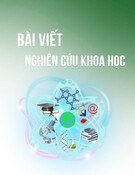





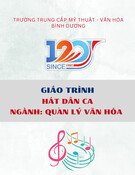
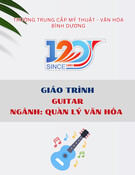
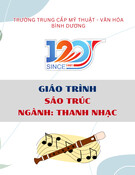

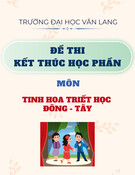
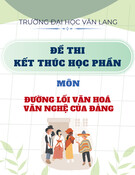
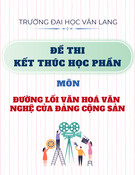

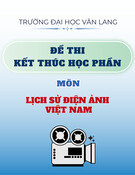
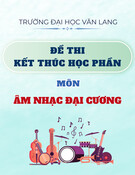
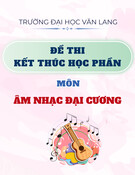
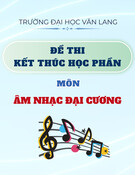


![Câu hỏi ôn tập Kỹ thuật quay phim và chụp ảnh [chuẩn nhất]](https://cdn.tailieu.vn/images/document/thumbnail/2025/20250711/kimphuong1001/135x160/488_cau-hoi-on-tap-ky-thuat-quay-phim-va-chup-anh.jpg)
